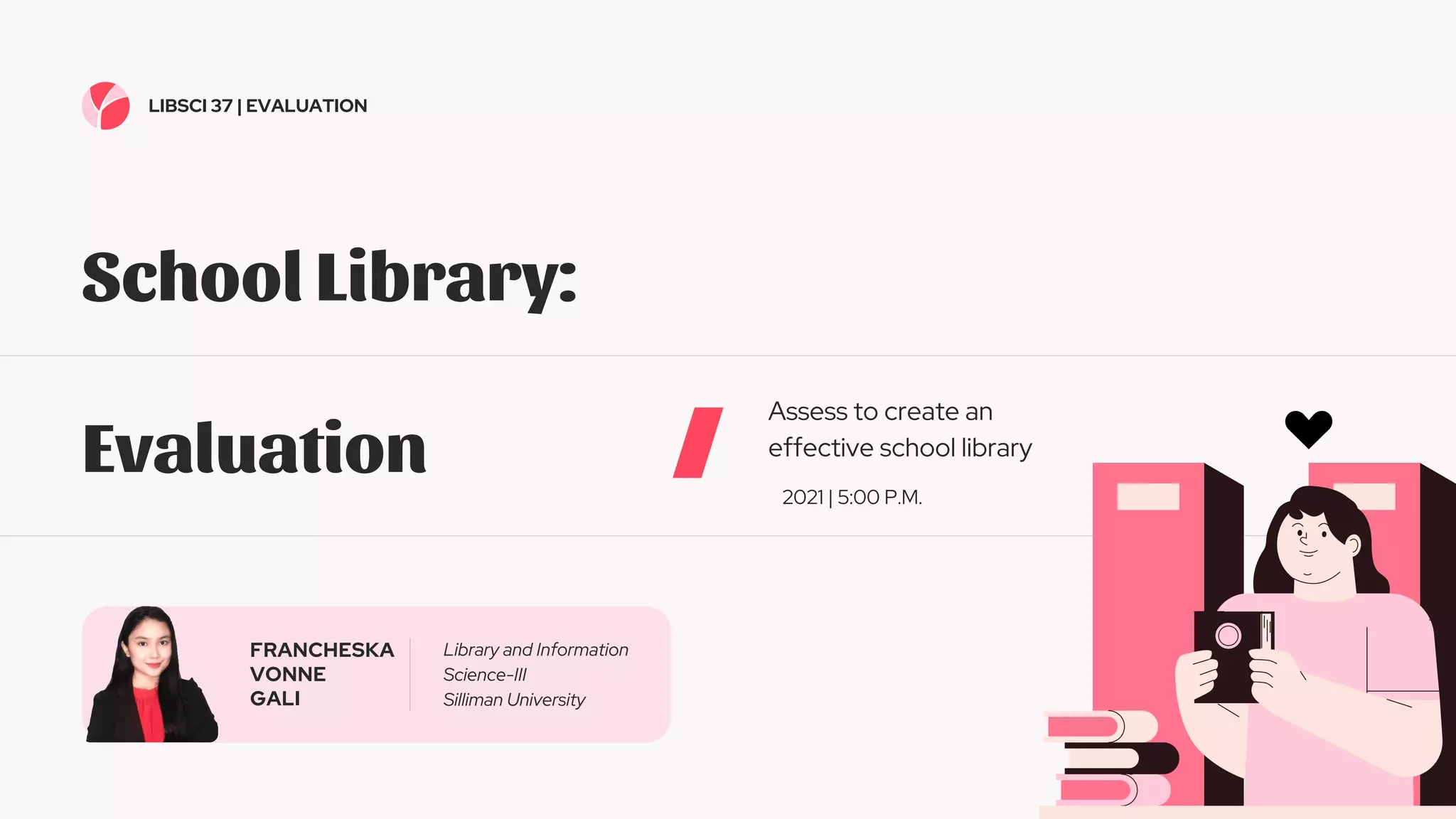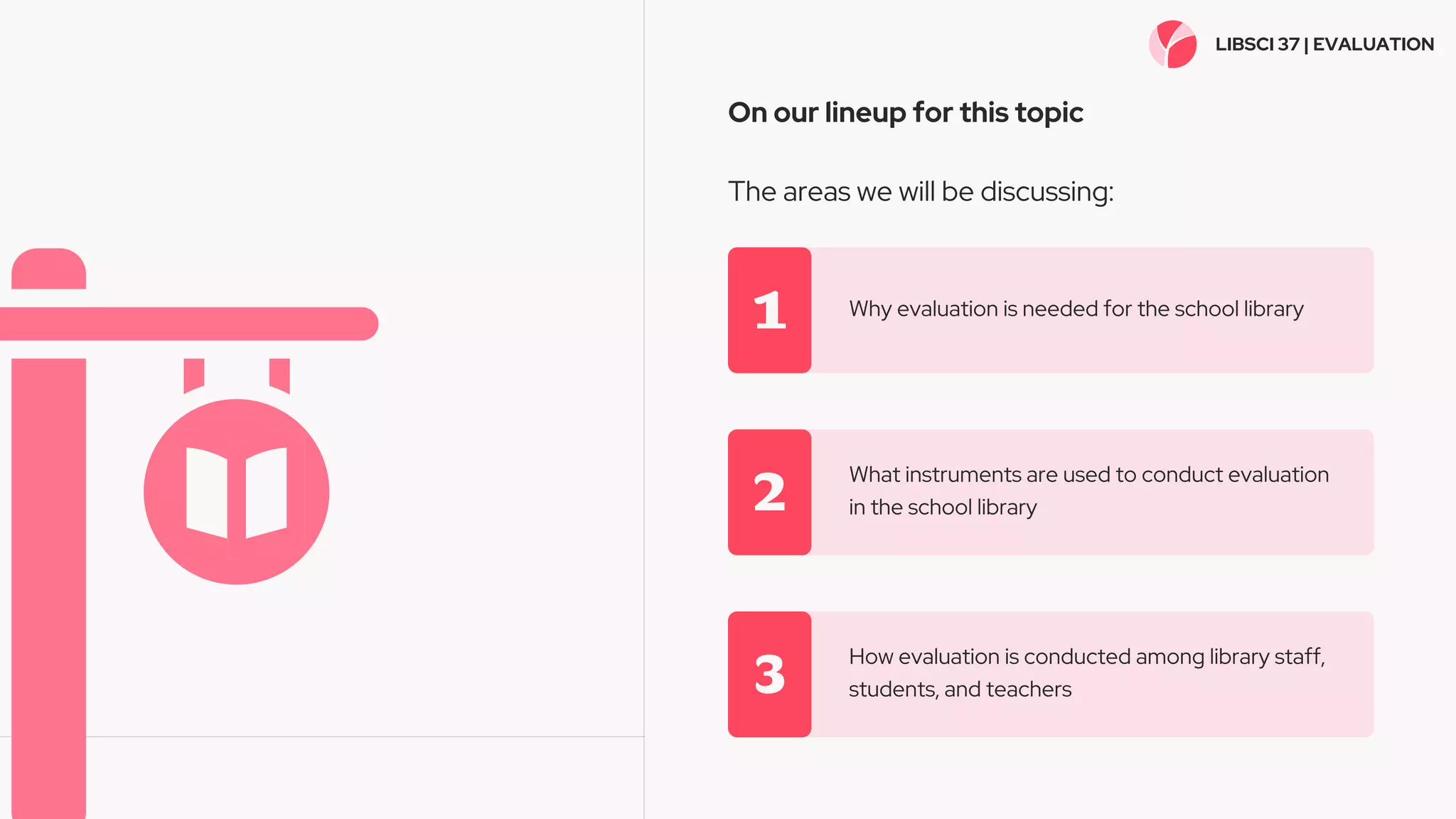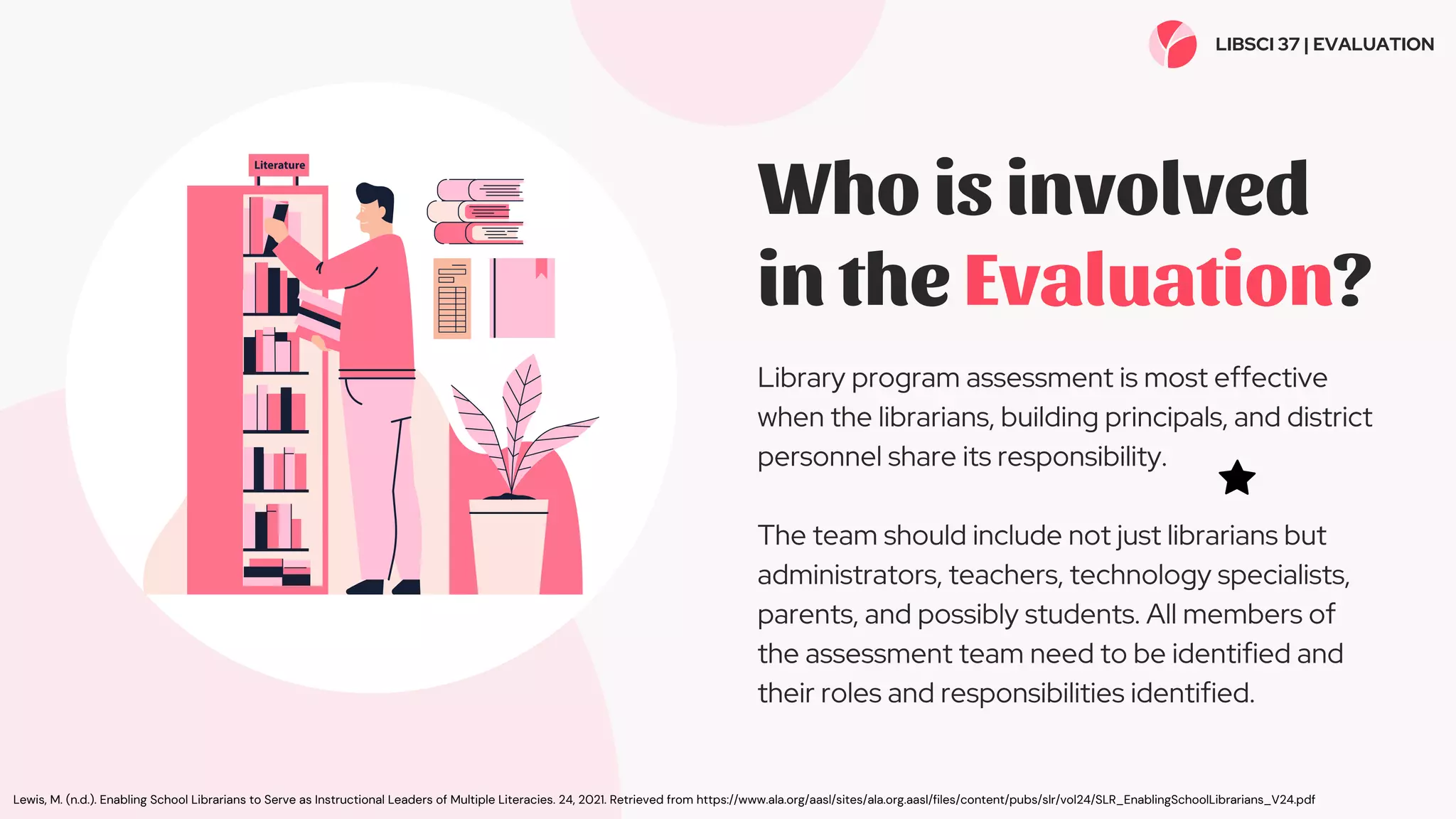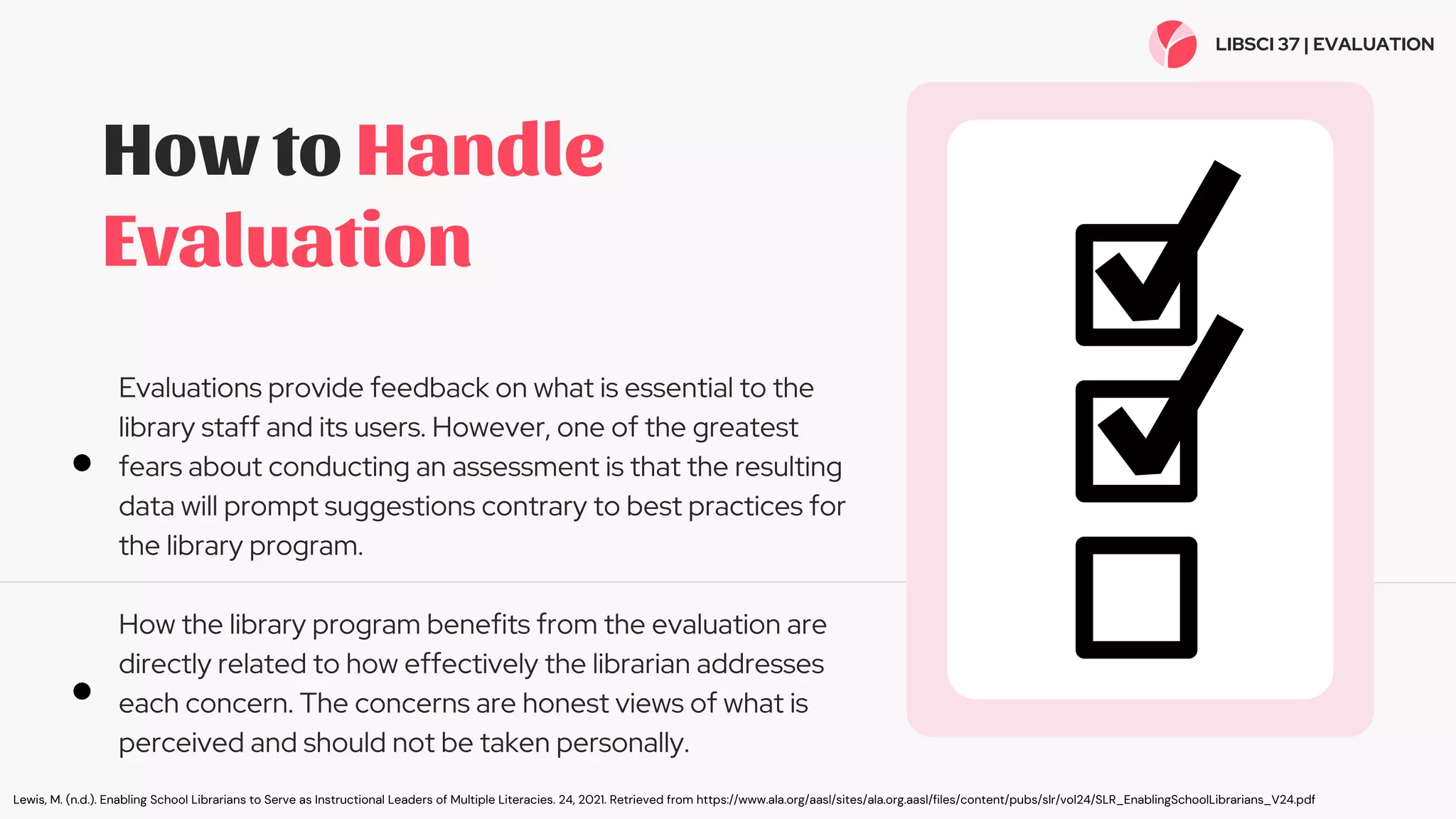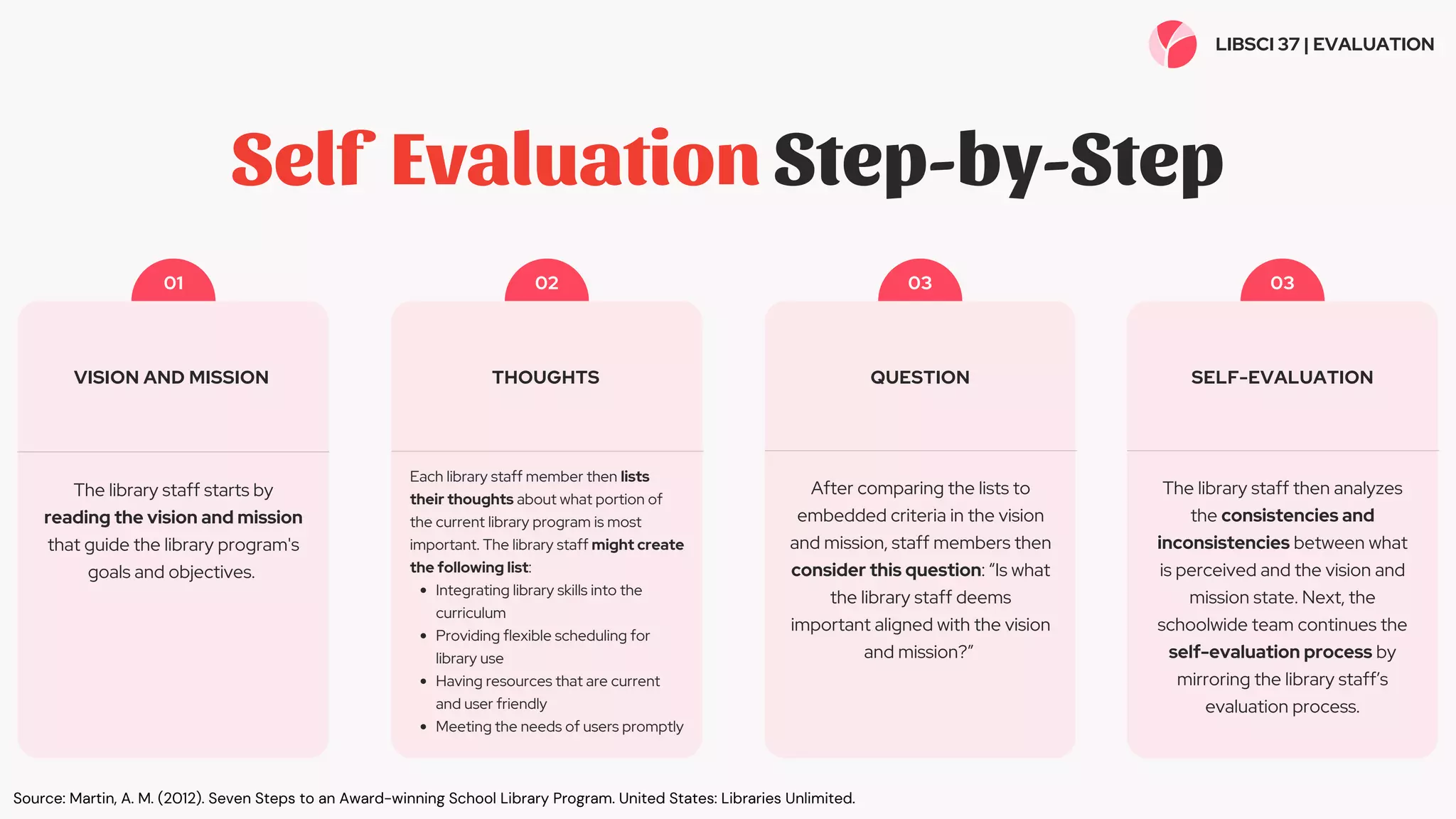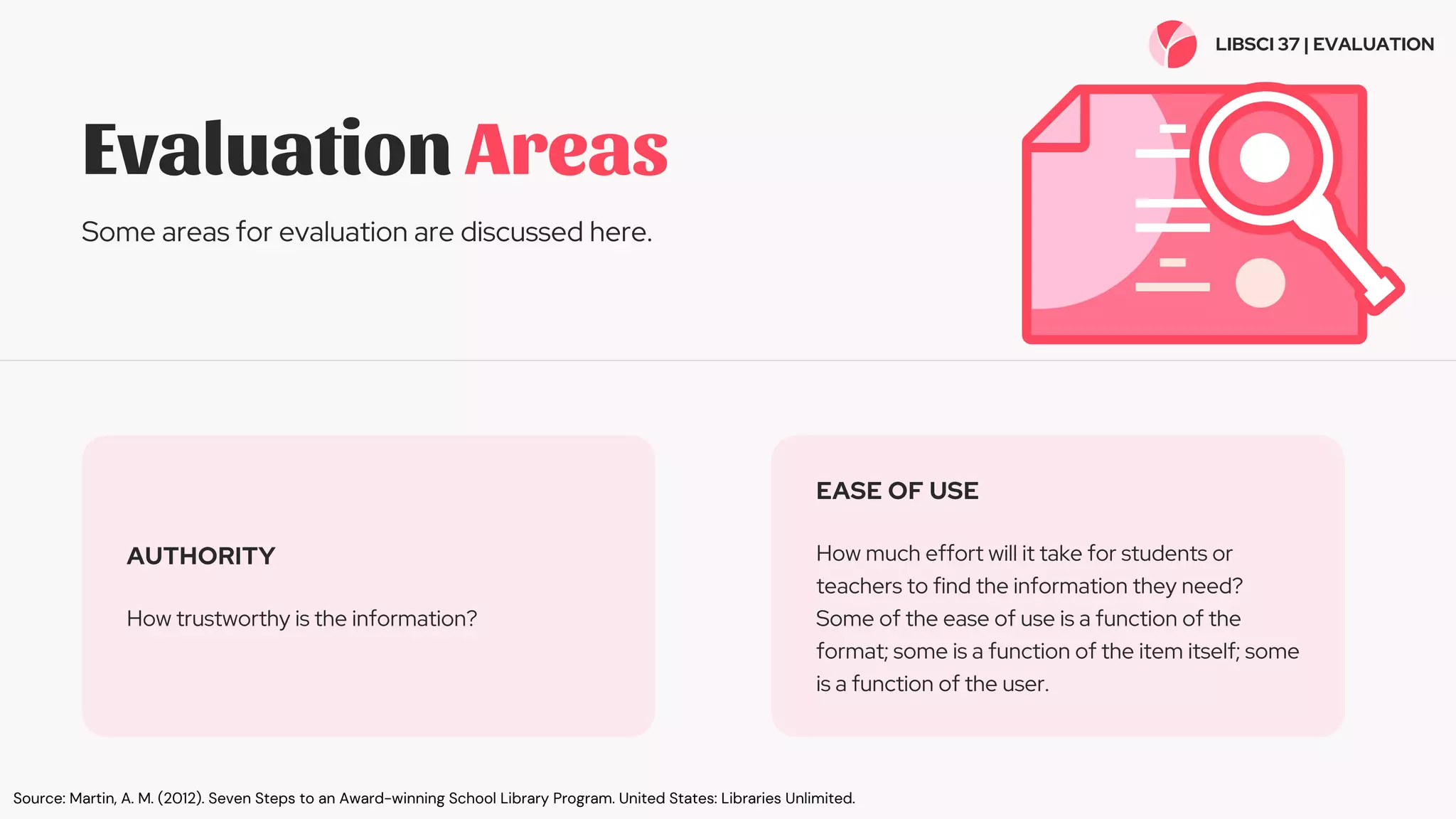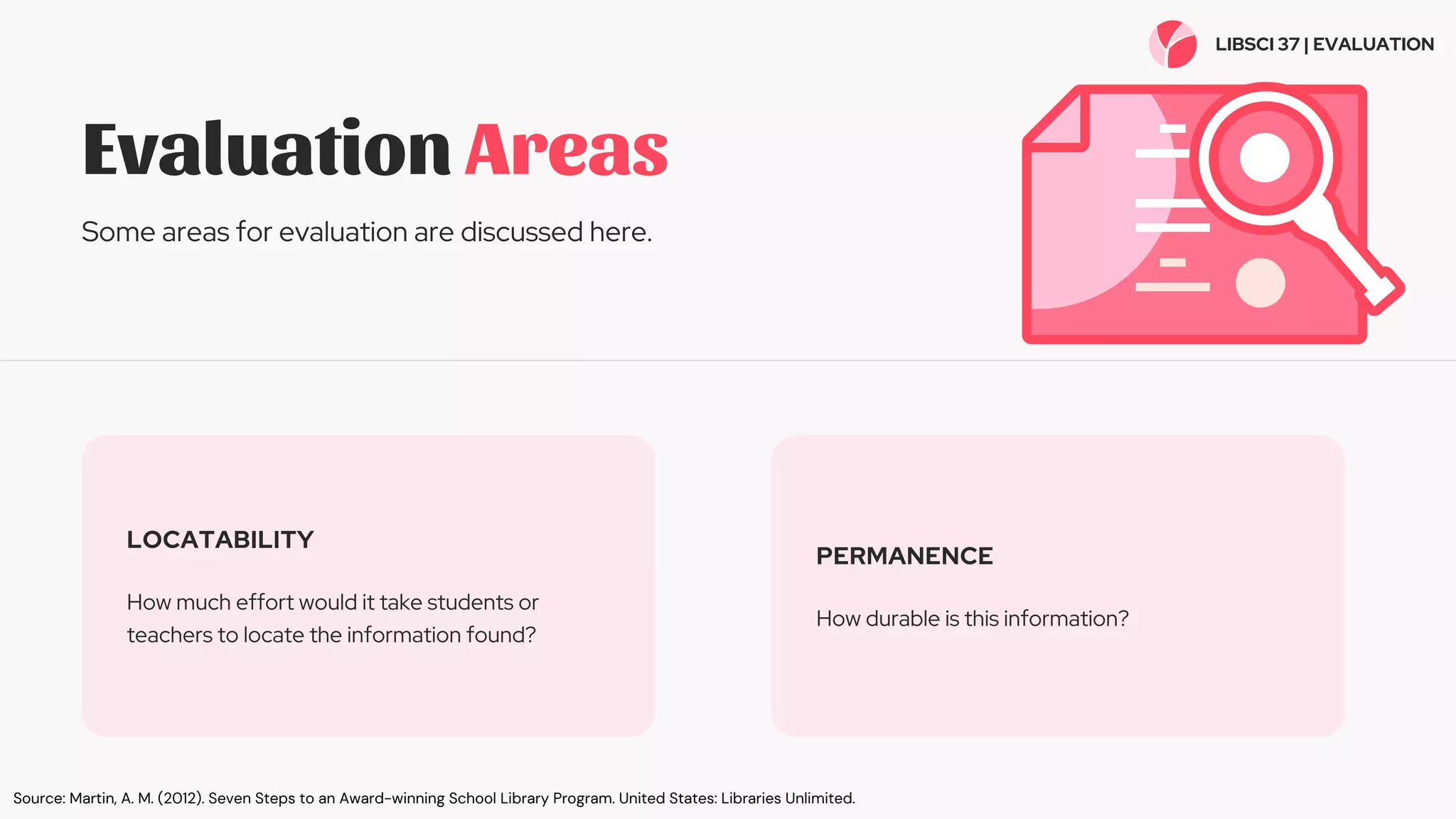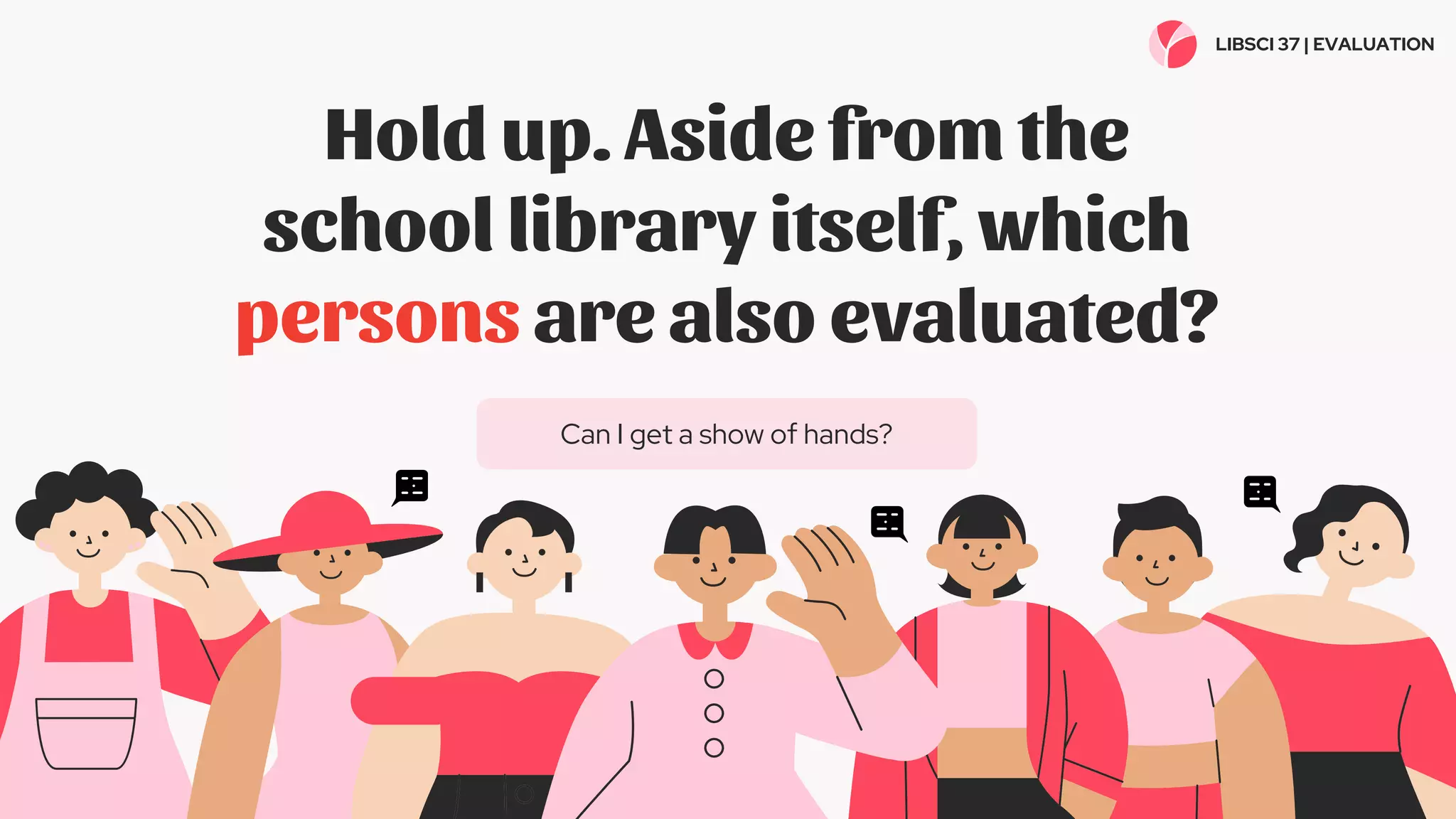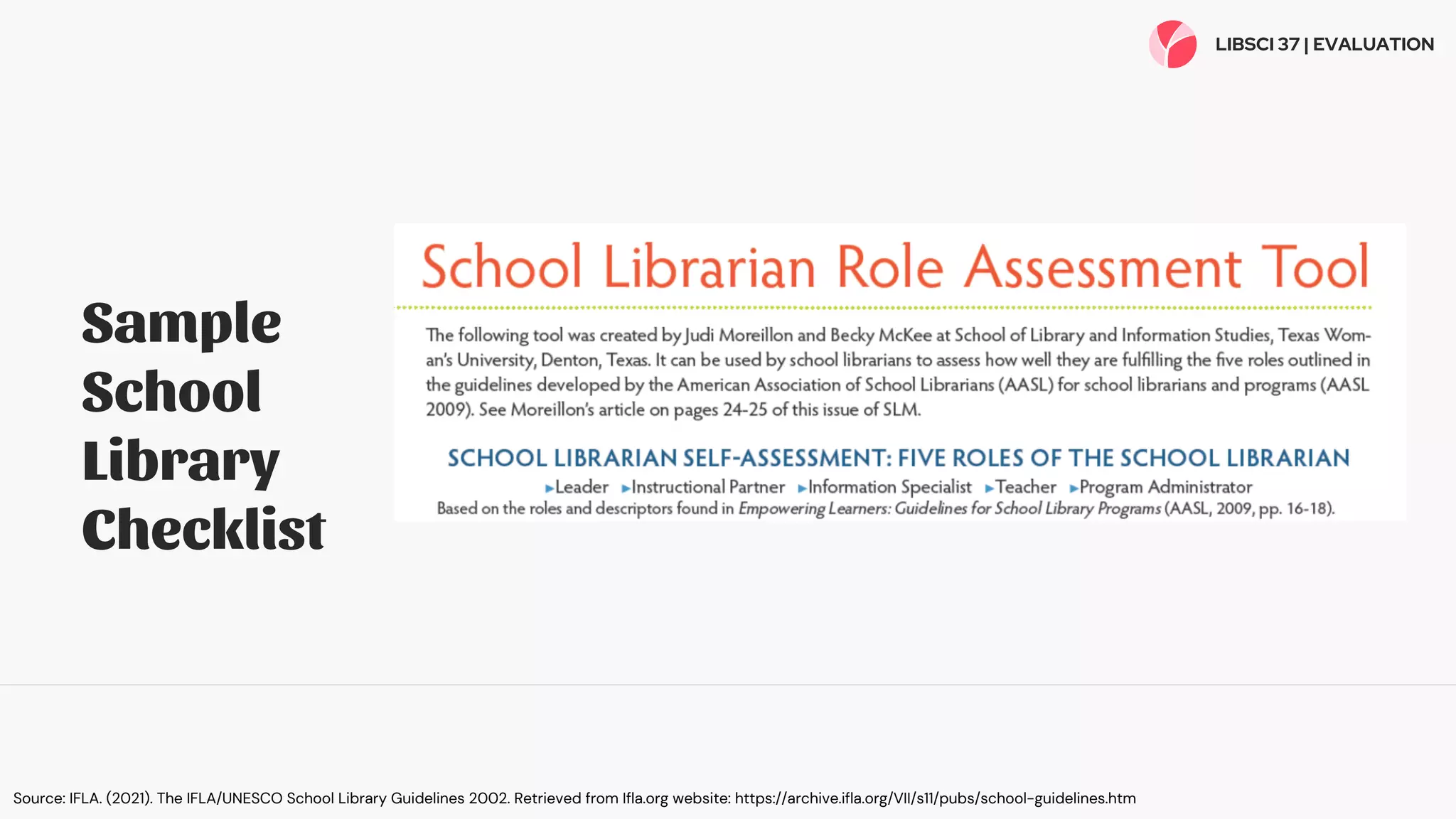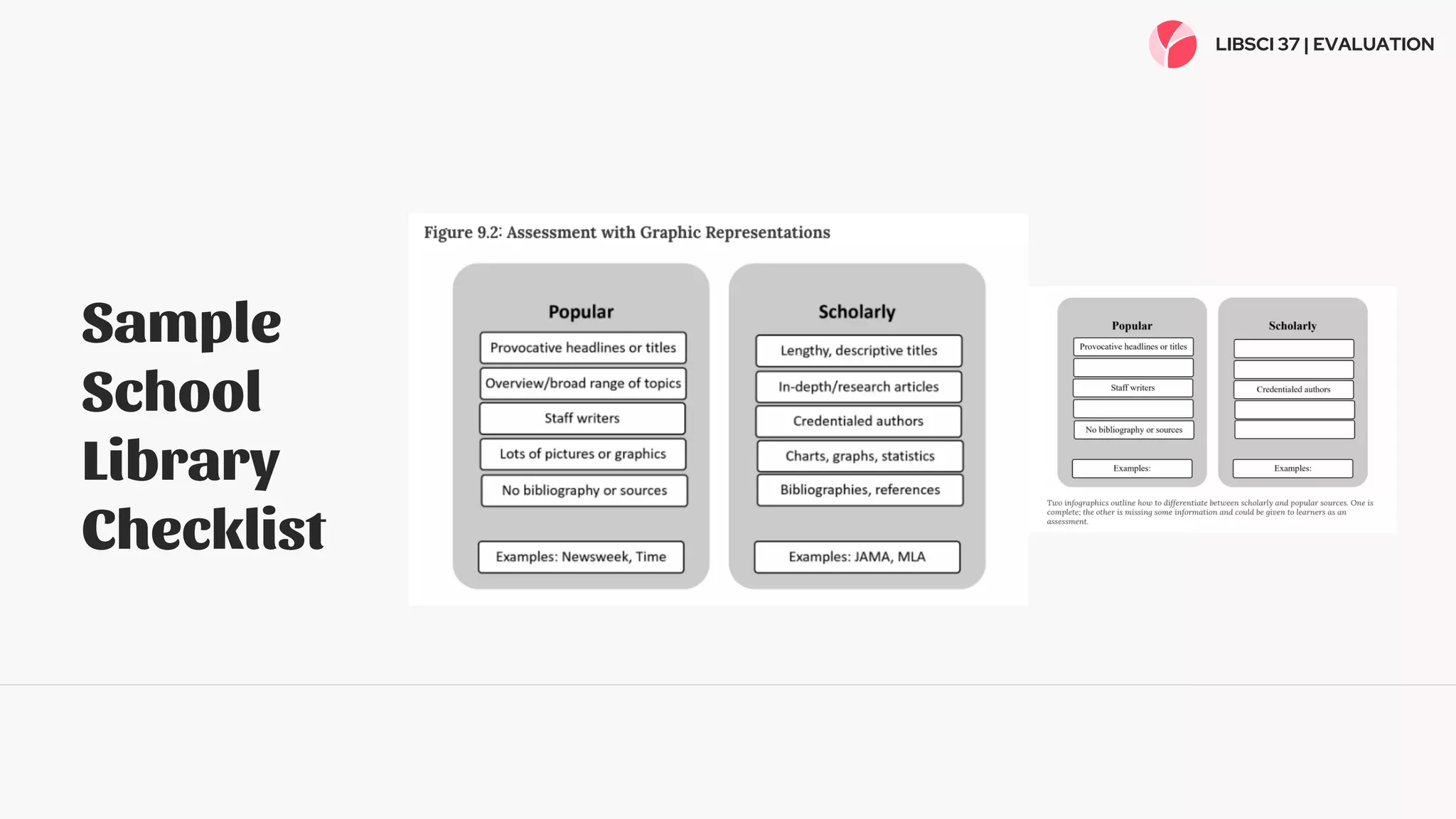The document discusses evaluation of school libraries. It describes various instruments used to evaluate school libraries, including surveys, focus groups, resource inventories, and rubrics. It also discusses evaluating library staff, students, teachers, and the library program itself to determine strengths and areas for improvement. The goal of evaluation is to continuously improve library programs and services and demonstrate how the library supports student and school success.
